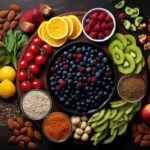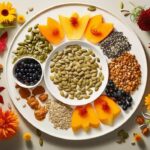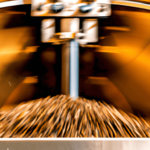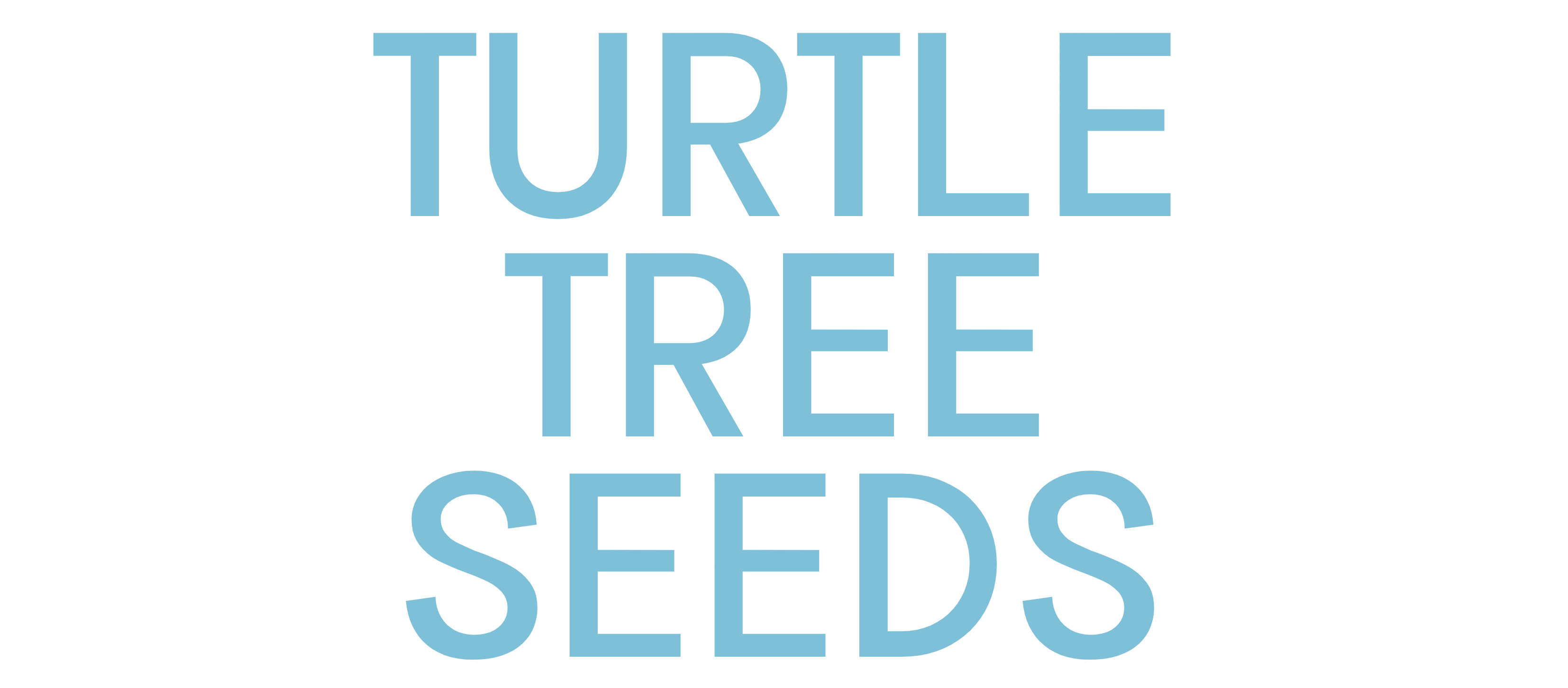Chia Seeds in Gluten-Free Diets
Thriving Gluten-Free With These Tiny Powerhouses

Are you ready to start a journey focused on enhancing your health and embracing a delicious gluten-free lifestyle?
In this article, we’ll explore how chia seeds can be tiny powerhouses in our quest for thriving on a gluten-free diet. These little wonders offer numerous health benefits, from boosting energy levels to providing essential nutrients.
We’ll also share practical tips on incorporating chia seeds into your daily routine.
Let’s unlock the potential of these small but mighty seeds together!
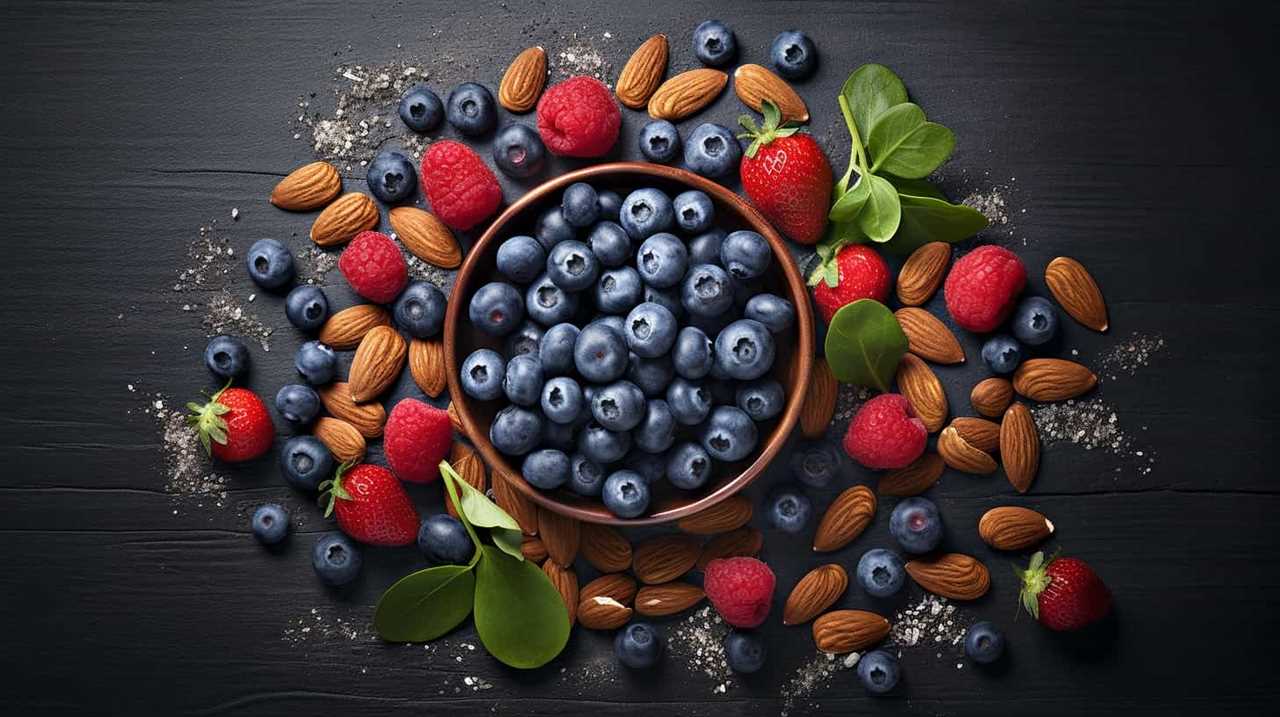
Key Takeaways
- Chia seeds offer a range of health benefits, including promoting digestive health and aiding in weight management.
- The high fiber content of chia seeds helps prevent energy crashes and supports sustained energy levels.
- Chia seeds are a rich source of essential nutrients like omega-3 fatty acids and protein, which are important for brain health, muscle repair, and growth.
- Incorporating chia seeds into a gluten-free diet provides not only gluten-free options but also numerous health benefits, including improved digestive health and overall well-being.
Health Benefits of Chia Seeds
What are the health benefits of chia seeds that make them such a powerhouse for those of us thriving gluten-free?
Well, let’s start with digestion. Chia seeds are packed with fiber, which helps to regulate bowel movements and promote a healthy digestive system. This can be especially beneficial for those with gluten intolerance or celiac disease, as digestive issues are common in these conditions.
Additionally, chia seeds have a unique ability to absorb liquid and form a gel-like substance in the stomach. This gel can help to slow down the digestion process, keeping you feeling fuller for longer periods of time. In fact, chia seeds are often touted as a natural appetite suppressant, making them a great addition to a gluten-free diet for weight management.
Boosting Energy Levels With Chia Seeds
To continue our exploration of the health benefits of chia seeds, let’s delve into how these tiny powerhouses can boost our energy levels while thriving gluten-free. Chia seeds offer numerous advantages when it comes to enhancing our energy and vitality. Firstly, they are a great source of fiber, which promotes improved digestion and can help prevent energy crashes. Additionally, chia seeds are incredibly hydrating due to their ability to absorb water, which aids in maintaining electrolyte balance and preventing dehydration, a common cause of fatigue.

Let’s take a closer look at how chia seeds contribute to improved digestion and hydration:
| Benefits of Chia Seeds |
|---|
| Improved Digestion |
| Hydration and Electrolyte Balance |
With these benefits in mind, it is evident that incorporating chia seeds into our diet can be a valuable tool in boosting our energy levels and maintaining overall well-being. In the next section, we will explore how chia seeds serve as a source of essential nutrients.
Chia Seeds as a Source of Essential Nutrients
Chia seeds provide us with essential nutrients that are crucial for thriving gluten-free. These tiny powerhouses are rich in omega-3 fatty acids, fiber, protein, and antioxidants. Omega-3 fatty acids are important for brain health and can help reduce inflammation in the body.
Fiber is essential for digestive health and can aid in preventing constipation. Chia seeds also contain a good amount of protein, which is important for muscle repair and growth. Additionally, the antioxidants found in chia seeds help protect our cells from damage caused by free radicals.
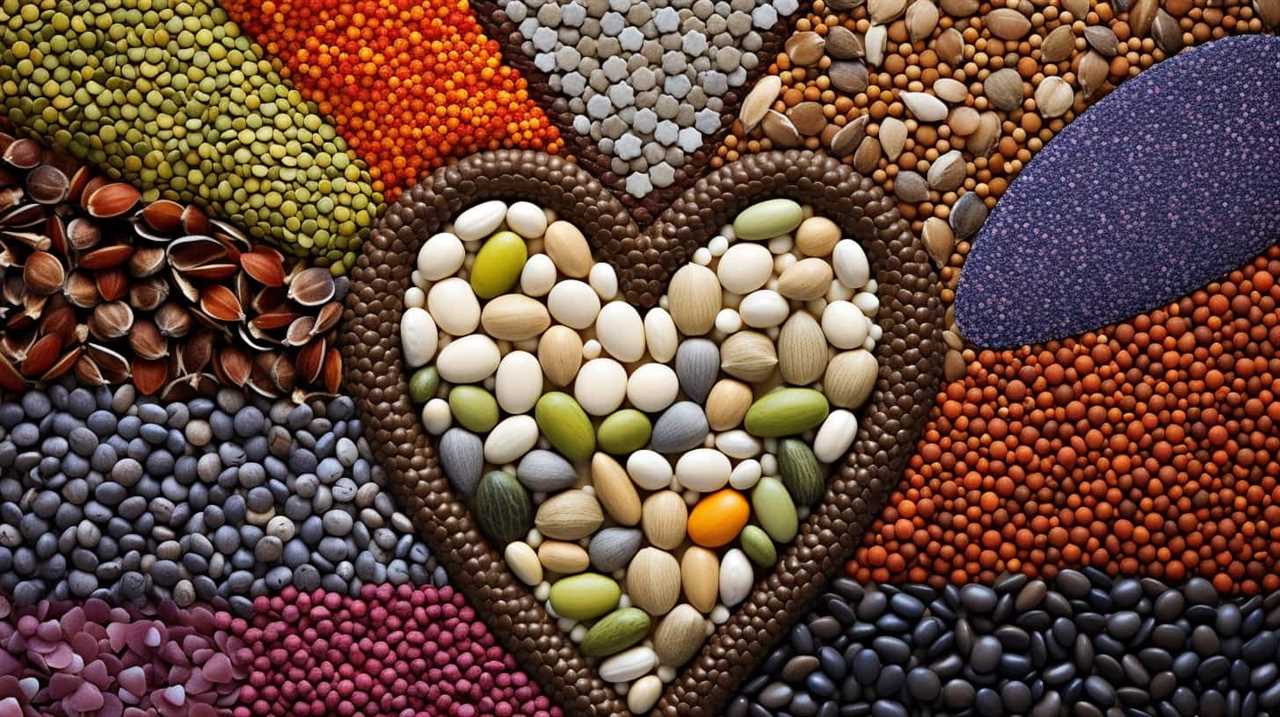
To incorporate chia seeds into your gluten-free diet, try adding them to smoothies, yogurt, or oatmeal. You can also use them as an egg substitute in baking recipes. Including chia seeds in your diet can support digestion and provide a wide range of essential nutrients for overall health.
Managing Weight With Chia Seeds
One key benefit of incorporating chia seeds into our gluten-free diet is their potential to aid in weight management. Chia seeds are a great addition to a weight loss plan due to their high fiber content, which helps to promote feelings of fullness and reduce overeating.
Here are three weight loss tips to incorporate chia seeds into your diet:
- Start your day with a chia seed smoothie or overnight chia pudding for a nutritious and filling breakfast.
- Use chia seeds as a topping for salads, yogurt, or oatmeal to add texture and increase satiety.
- Substitute chia seeds for eggs in baking recipes to reduce the calorie and fat content while adding a boost of nutrition.
By incorporating chia seeds into our gluten-free diet, we can’t only manage our weight effectively but also enjoy delicious and nutritious chia seed recipes.
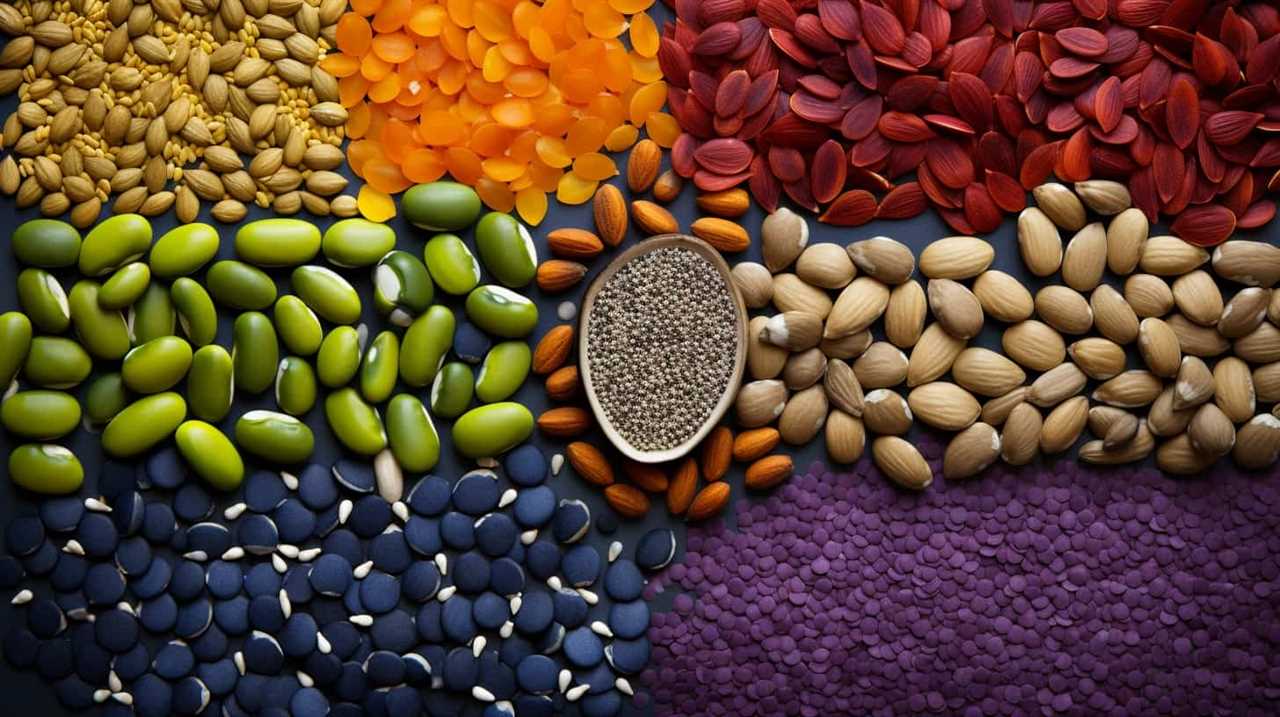
Now, let’s explore how to incorporate chia seeds into a gluten-free diet.
Incorporating Chia Seeds Into a Gluten-Free Diet
Let’s explore how we can incorporate chia seeds into our gluten-free diet. Chia seeds aren’t only a great addition to a gluten-free meal plan, but they also offer numerous health benefits. These tiny powerhouses are packed with fiber, omega-3 fatty acids, and antioxidants, making them a valuable ingredient for anyone looking to improve their digestive health.
One way to incorporate chia seeds into a gluten-free diet is by using them in recipes. Chia seed recipes are abundant and versatile, ranging from chia seed puddings to smoothies, baked goods, and even savory dishes. You can sprinkle chia seeds on top of salads, mix them into yogurt or oatmeal, or use them as an egg substitute in baking.
In addition to being gluten-free, chia seeds are also known for their ability to promote digestive health. The high fiber content in chia seeds helps regulate bowel movements and prevent constipation. Furthermore, chia seeds can absorb water and form a gel-like substance in the digestive tract, which can aid in digestion and promote a feeling of fullness.

Incorporating chia seeds into a gluten-free diet is an easy and delicious way to enhance your digestive health. By trying out chia seed recipes and incorporating them into your daily meals, you can reap the benefits of these tiny powerhouses and enjoy a gluten-free lifestyle.
Frequently Asked Questions
Can Chia Seeds Help Improve Digestion and Relieve Constipation?
Chia seeds can improve digestion and relieve constipation due to their high fiber content. They can also aid in weight loss and promote healthy skin. Incorporating chia seeds into our diet can be a practical and evidence-based way to support our overall well-being.
Can Chia Seeds Help Lower Cholesterol Levels and Reduce the Risk of Heart Disease?
Chia seeds are a great source of omega-3 fatty acids, which can benefit brain health and cognitive function. Additionally, incorporating chia seeds into a gluten-free diet may help with weight management and promote satiety.
Are Chia Seeds Safe for People With Nut Allergies?
Yes, chia seeds are safe for people with nut allergies. They are a great source of omega 3 fatty acids and can be used as an alternative to nuts in baking.

Can Chia Seeds Help Regulate Blood Sugar Levels and Benefit Individuals With Diabetes?
Chia seeds can help regulate blood sugar levels and benefit individuals with diabetes. They are also beneficial for weight management and are a great source of essential nutrients.
Are There Any Potential Side Effects or Risks Associated With Consuming Chia Seeds?
When it comes to chia seeds, we should be aware of potential adverse effects. However, research on the impact of chia seeds on weight management has shown promising results. Let’s explore the facts!
Conclusion
In conclusion, incorporating chia seeds into a gluten-free diet can be a game-changer for your health and well-being.
These tiny powerhouses are like the superheroes of the nutrition world, packed with essential nutrients and offering numerous health benefits.
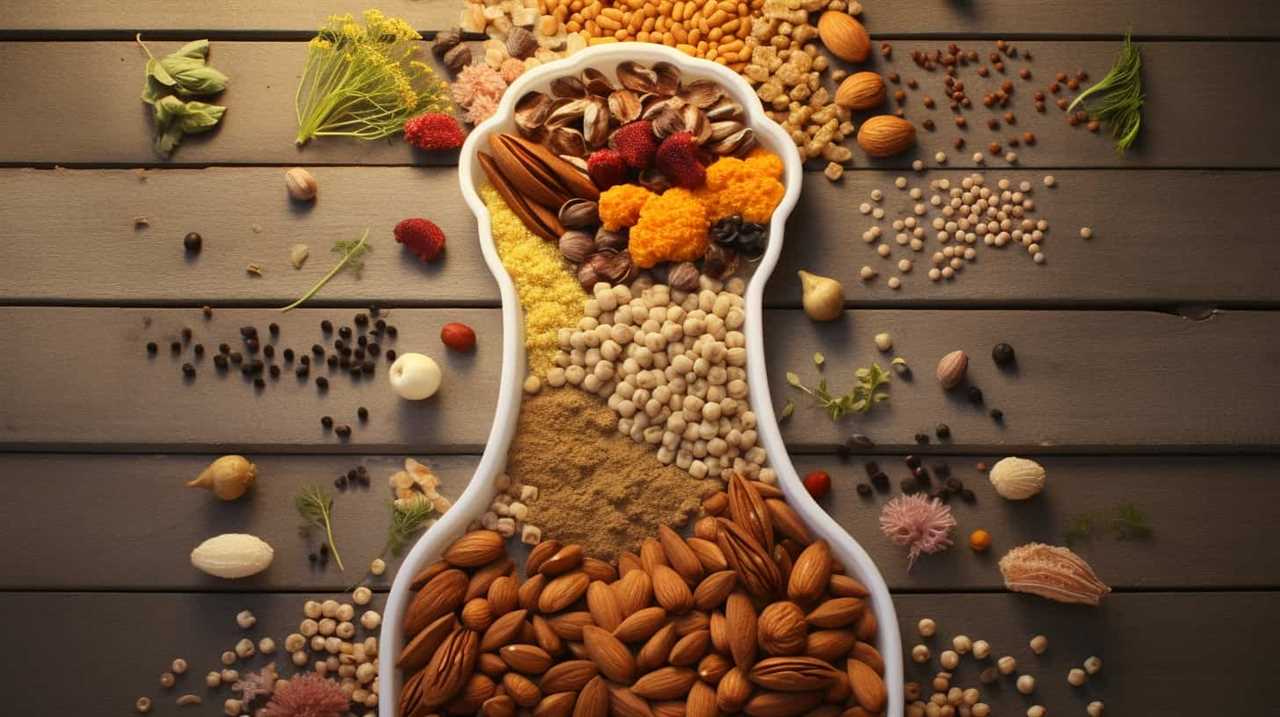
From boosting energy levels to managing weight, chia seeds have got you covered.
So why not give them a try and experience the incredible benefits for yourself?
Your body will thank you.
Hi, I’m Sarah. I write for Turtle Tree Seeds, a news blog that loves food – all kinds of food. But especially bacon, chocolate, and veggies. We’re on a mission to show the world that you can enjoy all of those things, even kale and brussels sprouts. Because we believe that when it comes to food, there’s no such thing as guilty pleasures. Just pleasures.
I’m also a huge fan of puns (obviously).
Chia Seeds in Gluten-Free Diets
3 Best Nutritional Benefits of Gluten-Free Seeds

Looking for a simple and nutritious way to enhance your diet? Gluten-free seeds are the perfect solution!
These tiny powerhouses are packed with amazing benefits that can improve your overall well-being. From being high in Omega-3 fatty acids to providing an excellent source of fiber, these seeds are a must-have for anyone seeking to boost their health.
Plus, they are loaded with essential vitamins and minerals to ensure your body is getting the nutrients it needs. Start incorporating gluten-free seeds into your meals today and reap the rewards!
Key Takeaways
- Omega-3 fatty acids found in gluten-free seeds have positive effects on heart health and support brain development and cognitive function.
- Gluten-free seeds, such as chia seeds, flaxseeds, and hemp seeds, are high in fiber, promoting a healthy digestive system, regulating blood sugar levels, and aiding in weight management.
- Gluten-free seeds contain essential vitamins and minerals like magnesium, iron, and vitamin E, which support the immune system and promote healthy digestion.
- Gluten-free seeds are versatile and easy to incorporate into meals, adding texture and flavor, and can be used as substitutes for gluten-containing ingredients in recipes, making them suitable for gluten-free diets.
High in Omega-3 Fatty Acids
One of the key benefits of gluten-free seeds is that they’re high in omega-3 fatty acids, which are essential for our overall health and well-being. Omega-3 fatty acids have been shown to have numerous positive effects on our bodies, including improving heart health and supporting brain development.
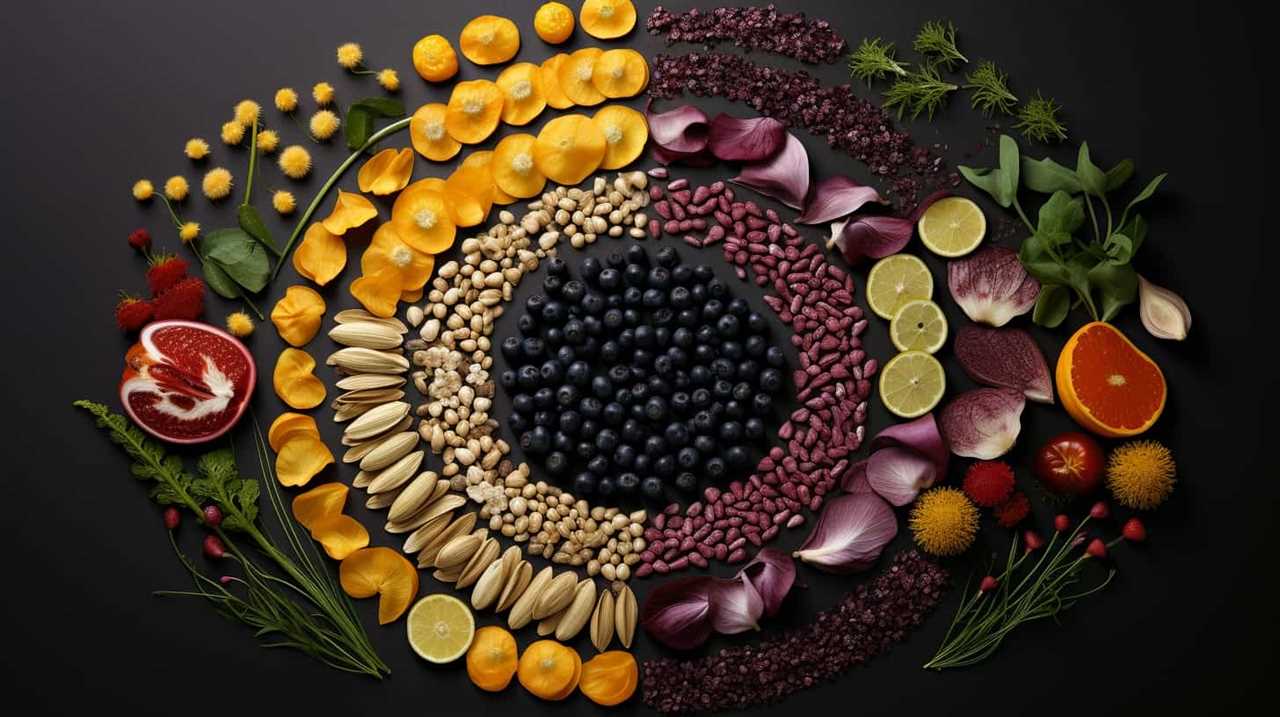
When it comes to heart health, research has consistently demonstrated that omega-3 fatty acids can reduce the risk of cardiovascular diseases. They’ve been found to lower blood pressure, reduce triglyceride levels, and decrease the risk of abnormal heart rhythms. Incorporating gluten-free seeds into our diet can provide us with a natural and plant-based source of these beneficial fats.
Furthermore, omega-3 fatty acids play a crucial role in brain development. They’re important for the growth and function of brain cells and can support cognitive function and memory. Studies have also suggested that adequate intake of omega-3 fatty acids during pregnancy and early childhood may have a positive impact on a child’s cognitive development and intelligence.
Incorporating gluten-free seeds into our diet can be a simple and effective way to increase our intake of omega-3 fatty acids. Whether it’s chia seeds, flaxseeds, or hemp seeds, these nutritious seeds can provide us with the essential fats needed for a healthy heart and optimal brain function.
Excellent Source of Fiber
Gluten-free seeds are an excellent source of fiber, which is essential for maintaining a healthy digestive system and promoting regular bowel movements. Including fiber-rich seeds in your diet can have numerous benefits for your digestive health.
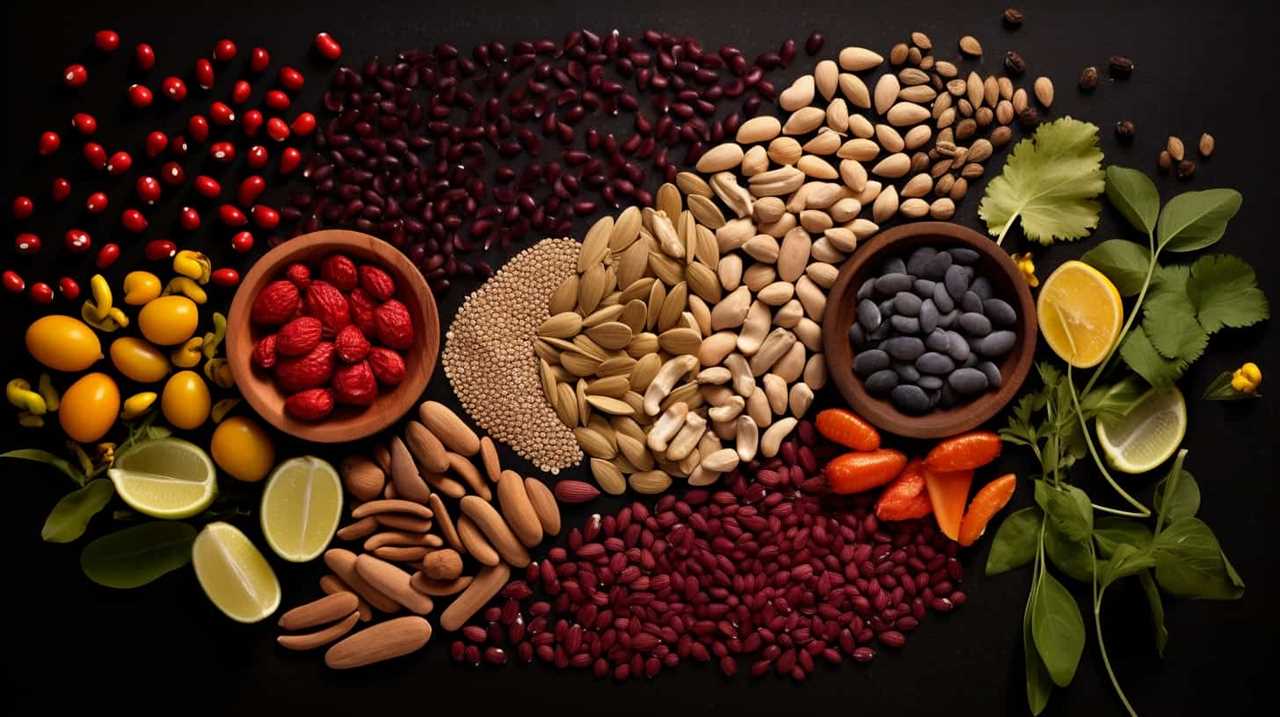
Fiber acts as a natural cleanser, helping to remove waste and toxins from your body, and preventing constipation. It also adds bulk to your stool, making it easier to pass. Additionally, fiber can help regulate blood sugar levels, lower cholesterol, and promote a feeling of fullness, which can assist in weight management.
Some great gluten-free seeds that are high in fiber include chia seeds, flaxseeds, and hemp seeds. Adding these seeds to your meals, such as sprinkling them on top of salads or mixing them into smoothies, can provide you with a convenient and delicious way to boost your fiber intake and support your digestive health.
Packed With Essential Vitamins and Minerals
Including gluten-free seeds in our diet provides us with a wide array of essential vitamins and minerals that are important for overall health and well-being. These tiny powerhouses are packed with nutrients that can support our body’s functions and promote optimal health.
Here are three reasons why incorporating gluten-free seeds into our diet is beneficial:

- Antioxidant-rich options: Many gluten-free seeds, such as chia seeds and flaxseeds, are packed with antioxidants. These compounds help protect our cells from damage caused by harmful free radicals, reducing the risk of chronic diseases.
- Potential weight loss benefits: Gluten-free seeds are an excellent addition to a weight loss diet. They’re low in calories but high in fiber and healthy fats, which can help keep us satiated and prevent overeating.
- Essential vitamins and minerals: Gluten-free seeds are rich in essential nutrients like magnesium, iron, and vitamin E. These vitamins and minerals play crucial roles in maintaining our immune system, promoting healthy digestion, and supporting overall well-being.
Frequently Asked Questions
Are Gluten-Free Seeds Suitable for Individuals With Celiac Disease or Gluten Intolerance?
Gluten-free seeds, suitable for those with celiac disease or gluten intolerance, offer a range of nutritional benefits. They provide essential vitamins, minerals, and fiber, promoting overall health and supporting a balanced diet.
Can Consuming Gluten-Free Seeds Help With Weight Management?
Oh boy, you won’t believe the amazing benefits of gluten-free seeds! They can actually help with weight management by improving insulin sensitivity and reducing inflammation and oxidative stress. Time to stock up!
Are Gluten-Free Seeds a Good Source of Protein?
Gluten-free seeds are a great source of protein, making them a beneficial addition to a balanced diet. Incorporating these seeds in baking can provide nutritional benefits, such as improved gut health, making them a valuable choice for our well-being.
Do Gluten-Free Seeds Have Any Potential Side Effects or Allergic Reactions?
Potential side effects and allergic reactions to gluten-free seeds can vary depending on the individual. It’s important to be aware of any allergies or sensitivities and consult with a healthcare professional if you experience any adverse reactions.
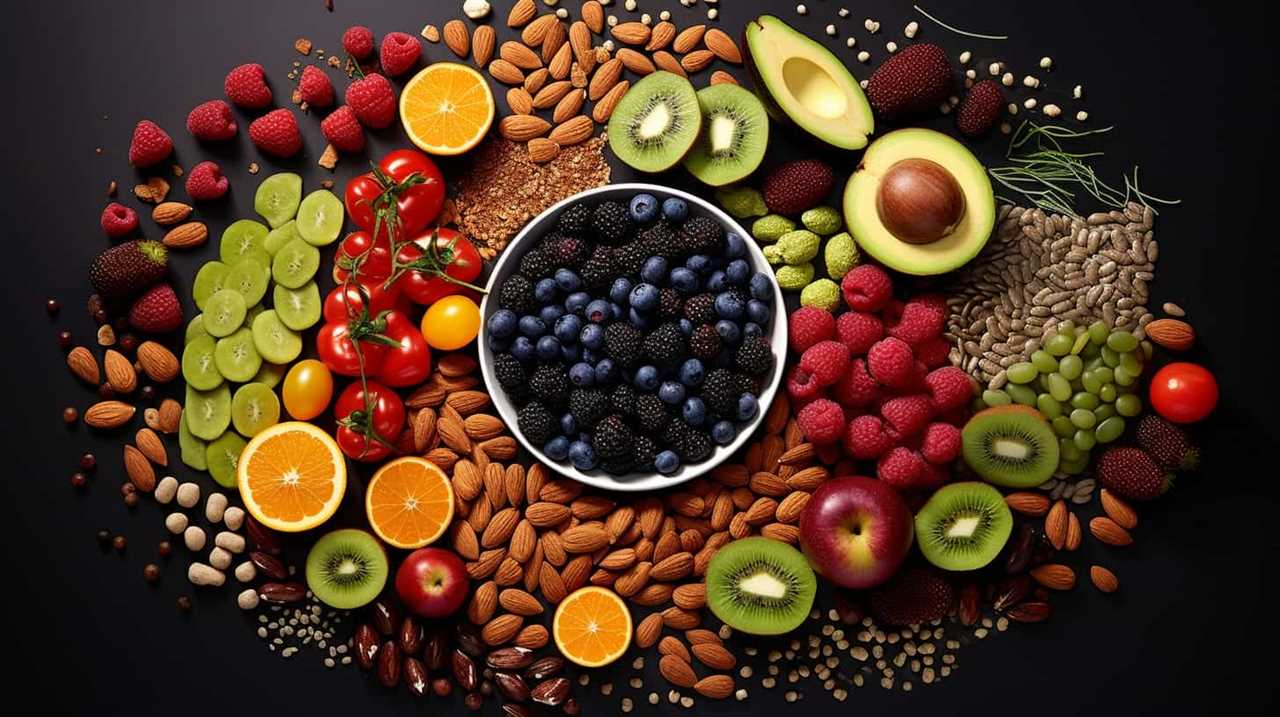
Can Gluten-Free Seeds Be Included in a Balanced Diet for Children and Adolescents?
Including gluten-free seeds in a balanced diet for children and adolescents is important from a nutritional perspective. We can explore the versatility of these seeds in kid-friendly recipes to provide essential nutrients and promote overall health.
Conclusion
In conclusion, gluten-free seeds offer a multitude of nutritional benefits. They’re high in omega-3 fatty acids, which support heart health and reduce inflammation.
Additionally, they’re an excellent source of fiber, aiding in digestion and promoting satiety.
Moreover, these seeds are packed with essential vitamins and minerals, contributing to overall well-being.

Incorporating gluten-free seeds into your diet is a practical and evidence-based way to improve your nutritional intake and support a healthy lifestyle.
Hi, I’m Sarah. I write for Turtle Tree Seeds, a news blog that loves food – all kinds of food. But especially bacon, chocolate, and veggies. We’re on a mission to show the world that you can enjoy all of those things, even kale and brussels sprouts. Because we believe that when it comes to food, there’s no such thing as guilty pleasures. Just pleasures.
I’m also a huge fan of puns (obviously).
Chia Seeds in Gluten-Free Diets
3 Best Ways to Utilize Seeds in Gluten-Free Baking
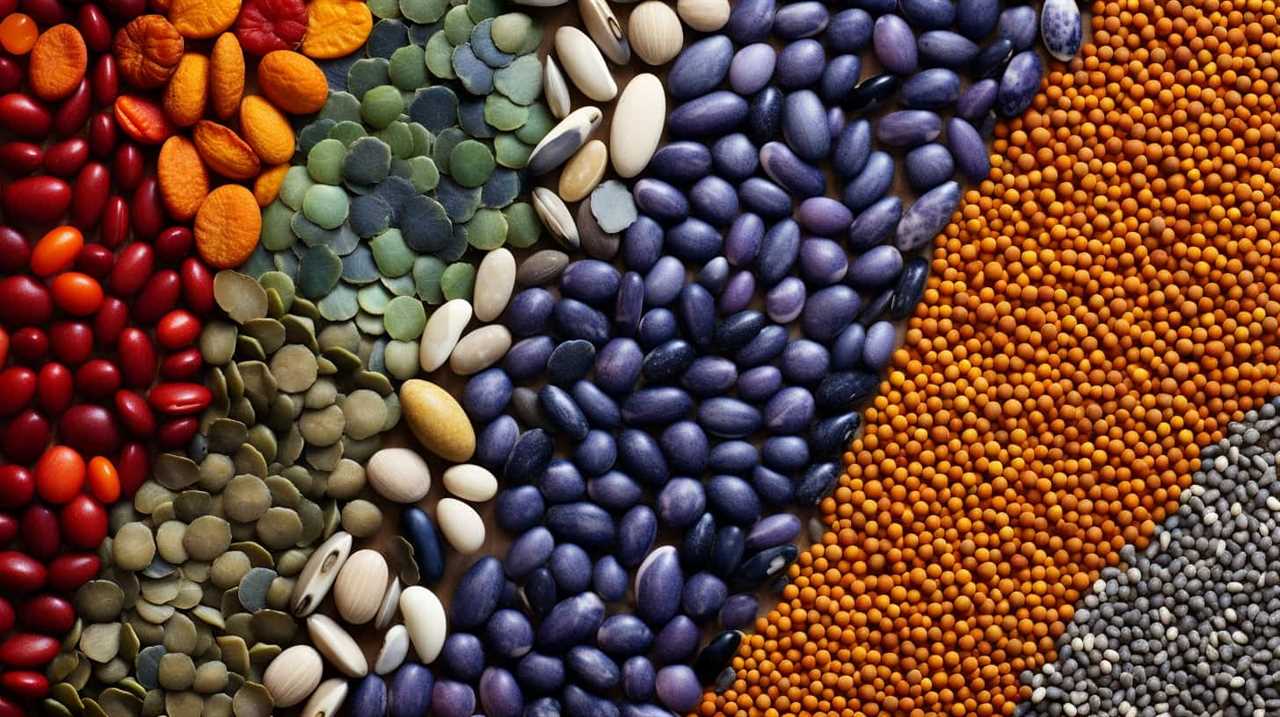
Are you ready to take your gluten-free baking skills to the next level?
We’ve got three incredible ways to utilize seeds that will transform your recipes.
Think of seeds as the secret ingredients that add both flavor and texture to your favorite treats.
With chia seed gel as an egg substitute, chia seeds as a binding agent, and chia seed flour for gluten-free baking, you’ll be amazed at the results.
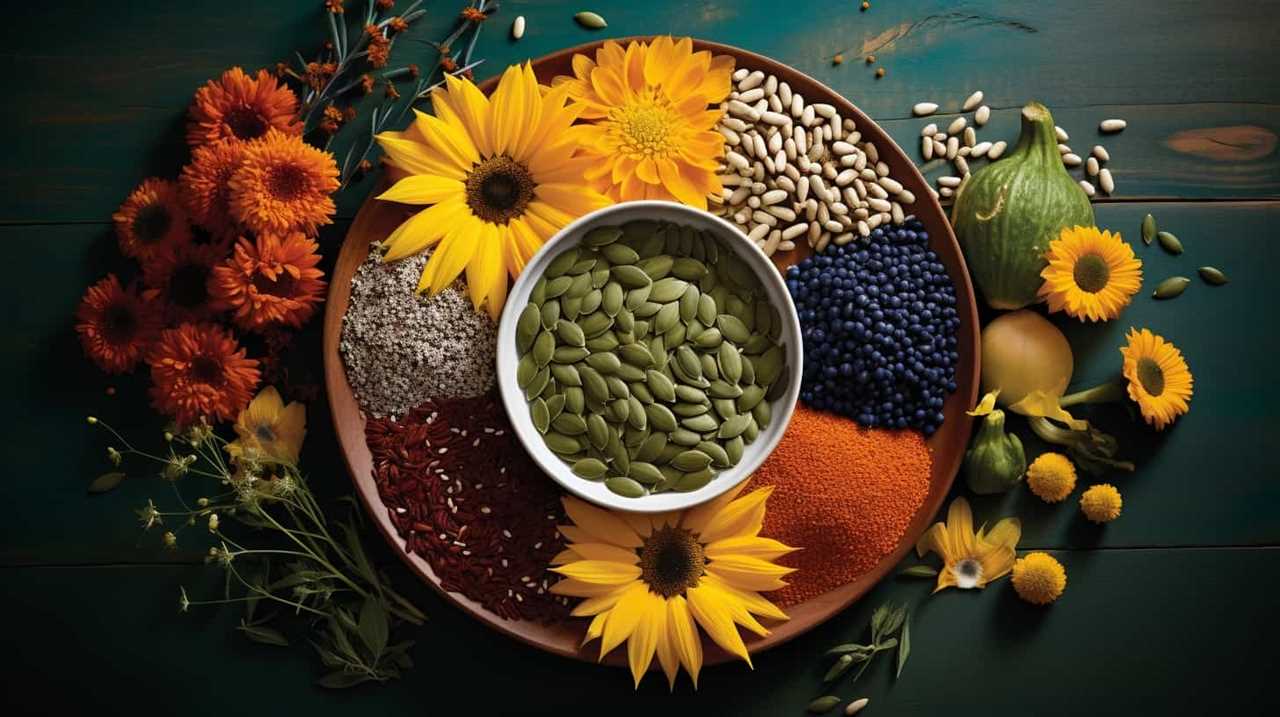
Get ready to serve up deliciousness that will leave everyone begging for seconds.
Key Takeaways
- Chia seed gel is a versatile ingredient in vegan baking that can mimic the binding properties of eggs and add moisture and a subtle nutty flavor to baked goods.
- Chia seeds can act as a binding agent in gluten-free baking, providing structure and helping to hold ingredients together.
- Chia seed flour is a nutritious addition to gluten-free recipes, offering fiber and omega-3 fatty acids, and providing a unique texture and nutty flavor to baked goods.
- Incorporating chia seeds in gluten-free baking enhances the taste and texture of treats while adding nutritional value, such as fiber and omega-3 fatty acids.
Chia Seed Gel as an Egg Substitute
In this article, we’ll explore the effectiveness of using chia seed gel as an egg substitute in gluten-free baking.
Chia seed gel is a popular ingredient in vegan baking recipes, as it provides a great alternative to eggs. When mixed with water, chia seeds form a gel-like consistency that can mimic the binding properties of eggs in baking.
This gel can be easily incorporated into a variety of gluten-free recipes, such as muffins, cookies, and cakes. Not only does chia seed gel act as a binder, but it also adds moisture and a subtle nutty flavor to your baked goods.

Additionally, chia seed gel can be used beyond baking and incorporated into smoothies and desserts to add a nutritional boost.
Chia Seeds as a Binding Agent
To continue our exploration of utilizing seeds in gluten-free baking, let’s discuss the role of chia seeds as a binding agent. Chia seeds are small, nutrient-dense powerhouses that are packed with fiber and omega-3 fatty acids. When combined with liquid, they form a gel-like substance that can be used as a substitute for eggs in baking.
Here are four reasons why chia seeds are a fantastic binding agent:
- Versatility: Chia seeds can be used in a variety of recipes, from breads and muffins to cookies and pancakes. They provide structure and help hold ingredients together, resulting in a moist and cohesive texture.
- Nutritional benefits: Chia seeds aren’t only great for binding, but they also offer numerous health benefits. They aid in digestion, thanks to their high fiber content, and can help regulate blood sugar levels.
- Easy to use: To create a chia seed gel, simply mix 1 tablespoon of chia seeds with 3 tablespoons of water and let it sit for 10 minutes until it thickens. This gel can then be used as an egg substitute in your gluten-free baking recipes.
- Chia seed pudding recipes: Chia seeds aren’t limited to baking; they’re also a key ingredient in chia seed pudding recipes. These delicious and nutritious puddings can be enjoyed as a healthy breakfast or dessert option.
Incorporating chia seeds as a binding agent in your gluten-free baking not only adds nutritional value but also helps create delicious and satisfying treats. So, why not give it a try and enjoy the benefits of chia seeds for digestion and overall well-being?
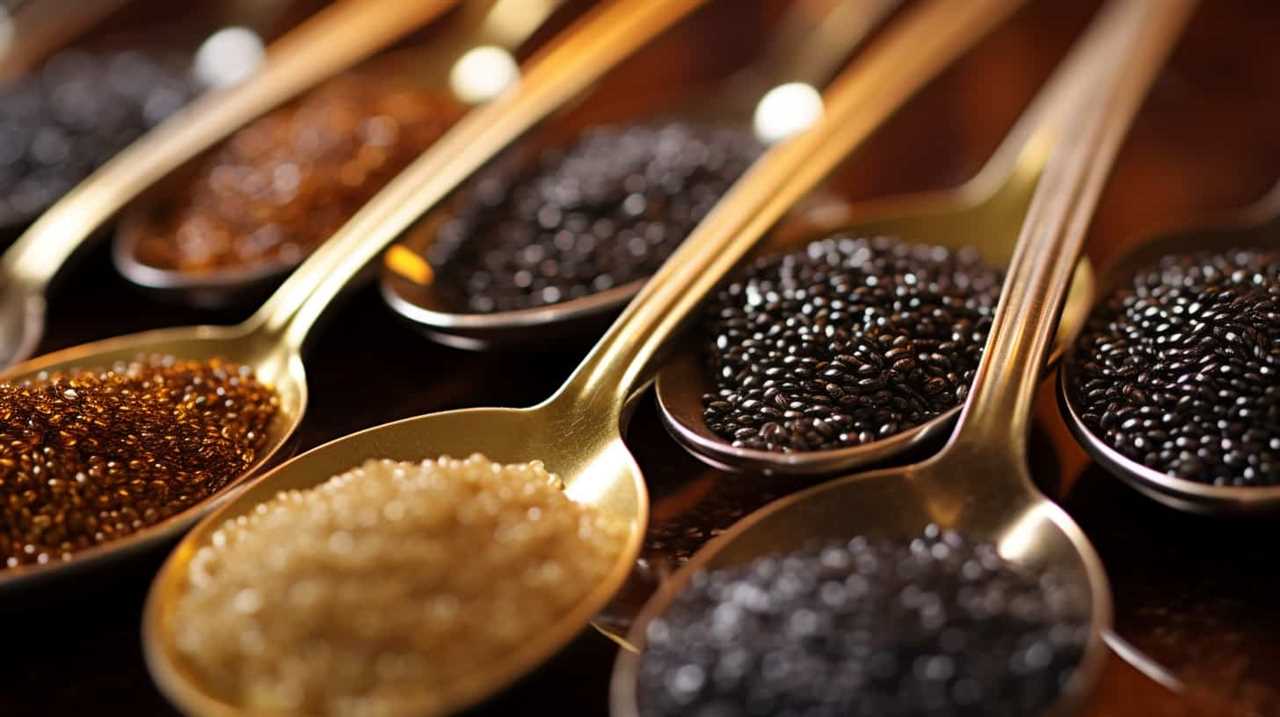
Chia Seed Flour for Gluten-Free Baking
Let’s dive into the benefits of utilizing chia seed flour in gluten-free baking. Chia seeds are a versatile ingredient that can be ground into a fine flour, adding a nutritious boost to your gluten-free recipes. Chia seed flour isn’t only a great source of fiber and omega-3 fatty acids, but it also provides a unique texture to baked goods.
One delicious way to use chia seed flour is by making chia seed pancakes. Simply substitute a portion of the regular flour in your pancake recipe with chia seed flour. This won’t only enhance the nutritional value of your pancakes but also give them a delightful nutty flavor.
Another popular option is to make chia seed pudding for breakfast. Mix chia seed flour with your choice of milk, sweetener, and flavorings such as vanilla or cocoa powder. Let it sit overnight in the refrigerator, and in the morning, you’ll have a creamy and nutritious pudding ready to enjoy.
Incorporating chia seed flour into your gluten-free baking not only adds nutritional benefits but also enhances the taste and texture of your creations. So go ahead and experiment with chia seed flour in your favorite recipes for a wholesome gluten-free option.

Frequently Asked Questions
Can I Use Chia Seeds in Other Gluten-Free Recipes Besides Baking?
Sure, we can definitely use chia seeds in other gluten-free recipes besides baking. Chia seeds can be added to savory dishes like salads, soups, and stir-fries to enhance both taste and nutrition. They are packed with health benefits, making them a versatile ingredient.
How Do I Store Chia Seed Gel and How Long Does It Last?
When it comes to storing chia seed gel, it’s important to keep it in an airtight container in the refrigerator. The shelf life of chia seed gel is typically around 5-7 days.
Can I Use Chia Seeds as a Binding Agent in Recipes That Are Not Gluten-Free?
Yes, you can use chia seeds as a binding agent in recipes that are not gluten-free. Chia seeds have many benefits, including being a great source of fiber and omega-3 fatty acids. They can be added to various recipes for added nutrition and texture.
Can I Substitute Chia Seed Flour for Regular Flour in All Baking Recipes?
Yes, you can substitute chia seed flour for regular flour in all baking recipes. Chia seeds are a great thickener in soups and sauces, and they offer numerous health benefits. They are versatile and can be used in various recipes.
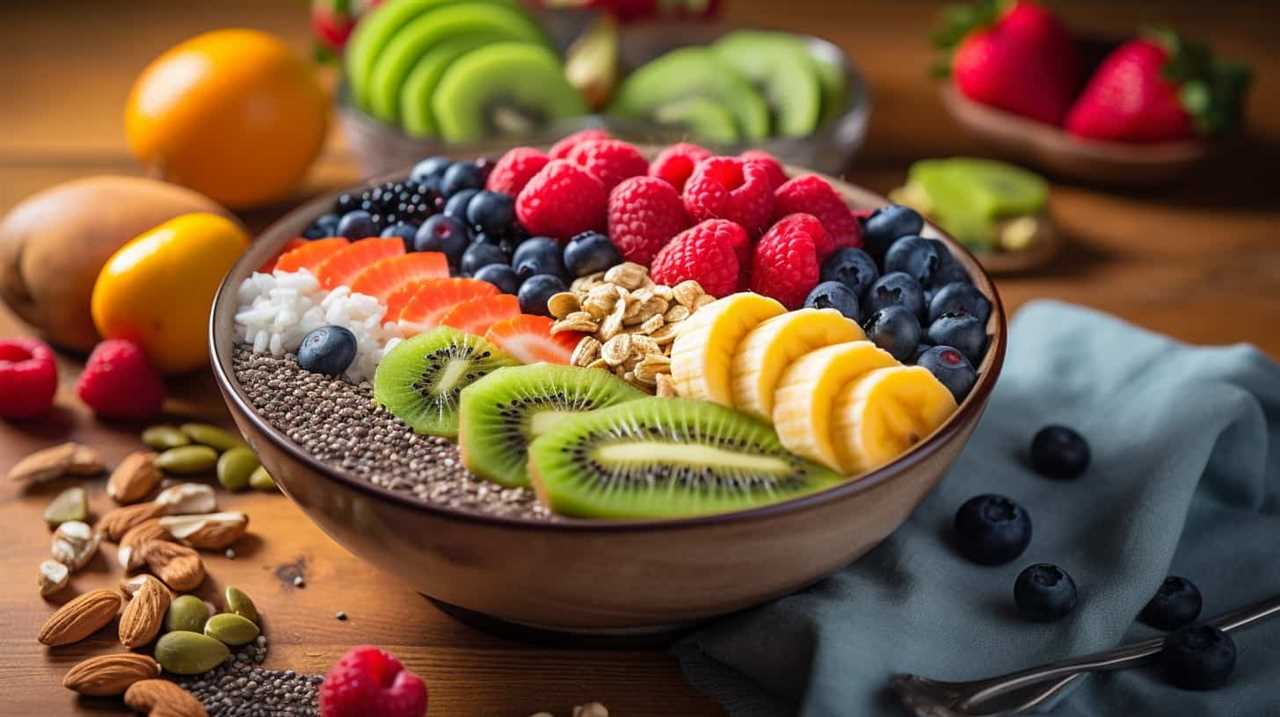
Are There Any Flavor Differences When Using Chia Seed Gel as an Egg Substitute in Baking?
When using chia seed gel as an egg substitute in baking, there may be slight flavor differences depending on the recipe. However, the benefits of using chia seeds in gluten-free baking, such as added nutrients and texture, outweigh any potential taste variations.
Conclusion
In conclusion, incorporating seeds into gluten-free baking can provide a variety of benefits. Chia seeds, in particular, can be used as an egg substitute, a binding agent, and even ground into flour for gluten-free recipes.
Interestingly, chia seeds contain 5 grams of fiber per tablespoon, which can contribute to a healthier digestive system.
By utilizing seeds in baking, individuals can enjoy delicious gluten-free treats while also reaping the nutritional advantages they offer.
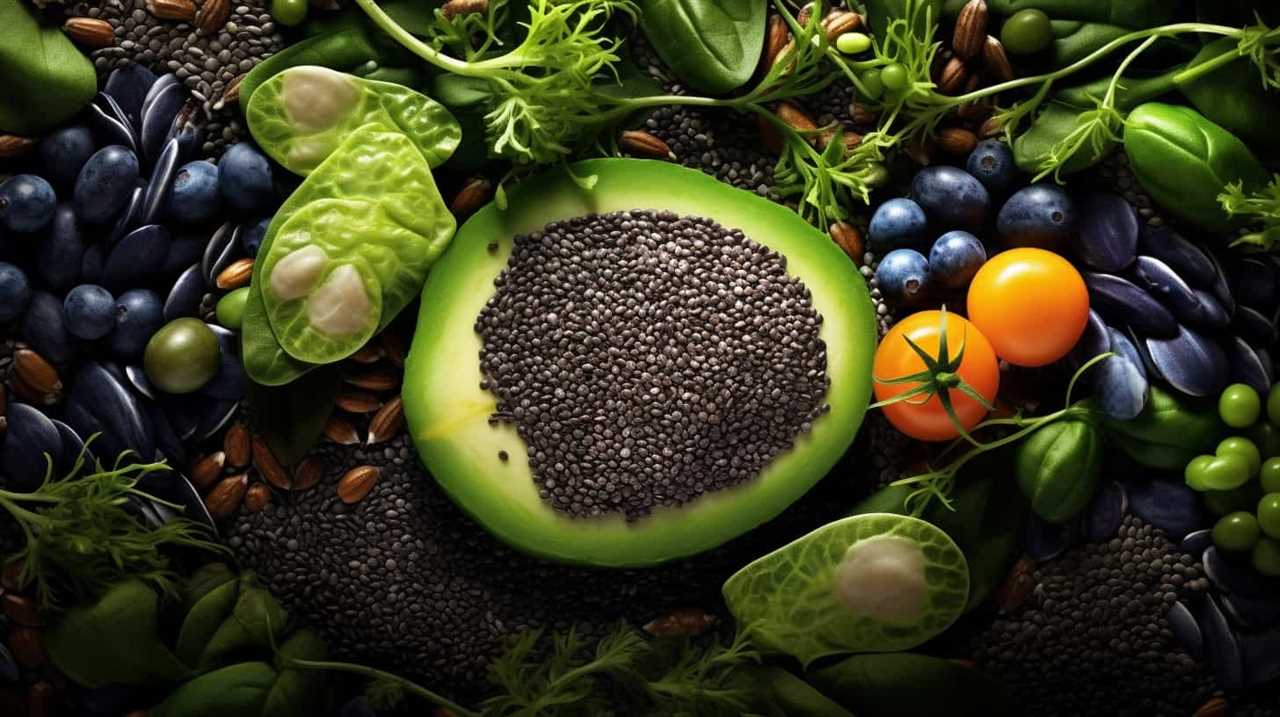
Hi, I’m Sarah. I write for Turtle Tree Seeds, a news blog that loves food – all kinds of food. But especially bacon, chocolate, and veggies. We’re on a mission to show the world that you can enjoy all of those things, even kale and brussels sprouts. Because we believe that when it comes to food, there’s no such thing as guilty pleasures. Just pleasures.
I’m also a huge fan of puns (obviously).
Chia Seeds in Gluten-Free Diets
6 Best Methods for Gluten-Free Bread With Supergrains
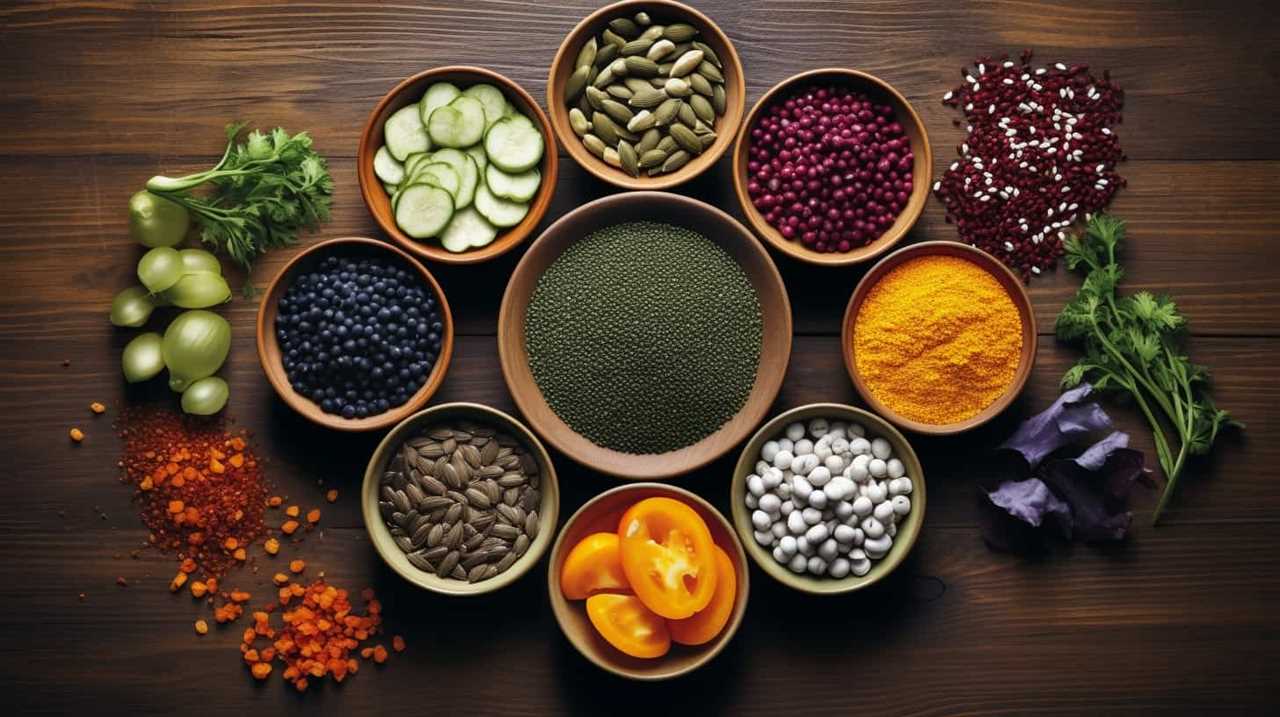
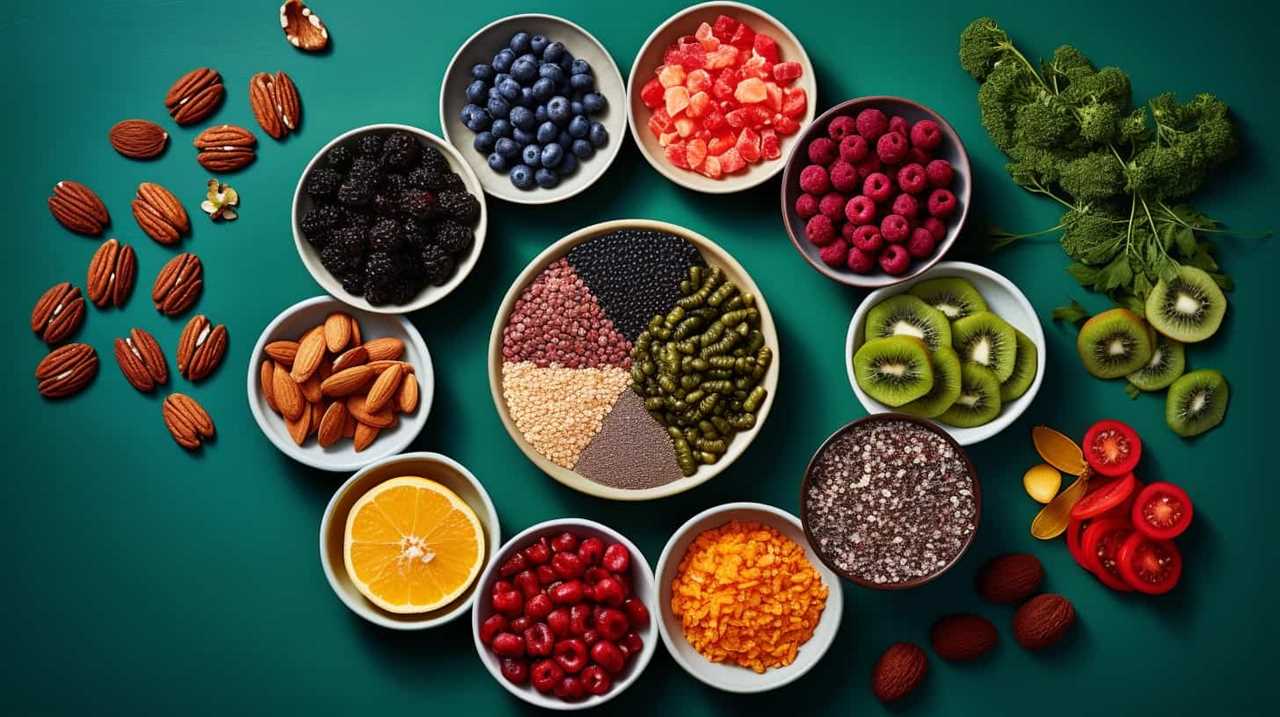
Tired of settling for subpar gluten-free bread? Look no further!
We’ve got you covered with our top 6 methods for making delicious gluten-free bread using supergrains. Get ready to discover the secrets to baking bread that is both healthy and satisfying.
From chia seeds to quinoa, we’ll show you how to take your gluten-free bread to the next level.
Let’s dive in and start creating bread that will leave your taste buds begging for more!
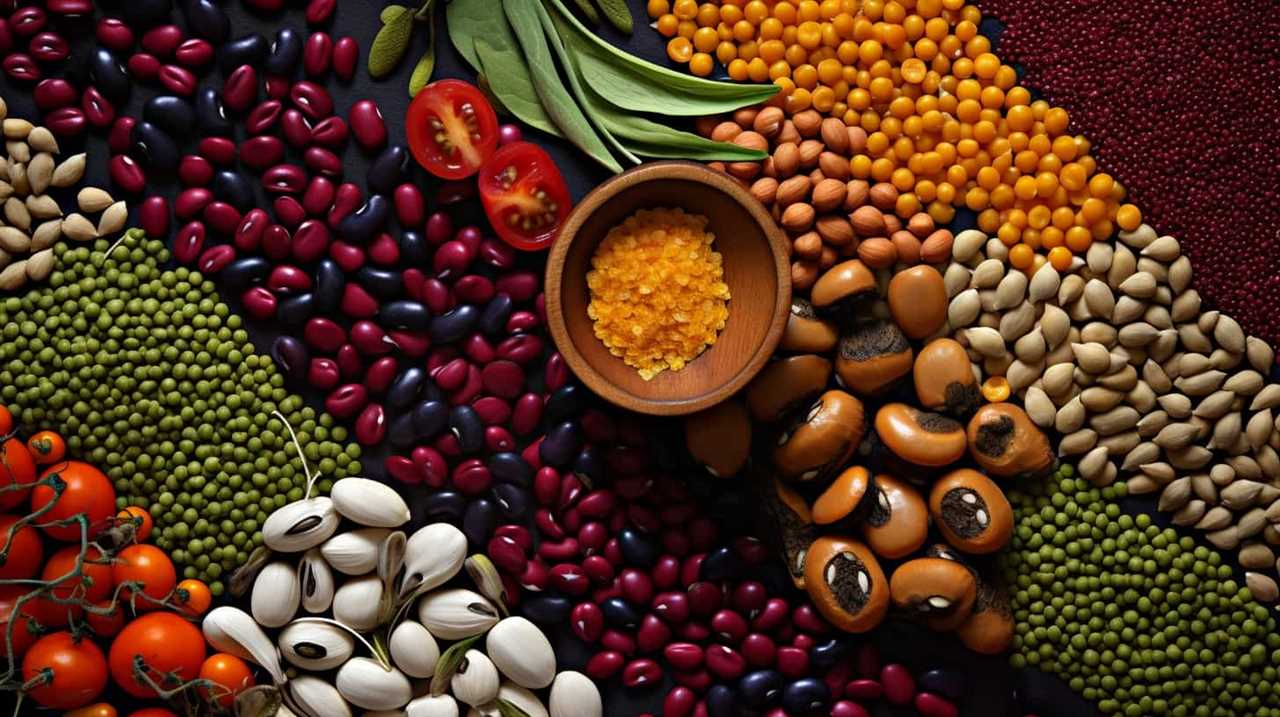
Key Takeaways
- Incorporating chia seeds into gluten-free bread enhances texture and nutrition.
- Chia seeds act as a binding agent, preventing the bread from crumbling.
- Chia seeds can be used as an egg substitute in vegan or egg-free diets.
- Adding chia seeds improves the texture, structure, and nutritional value of gluten-free bread.
Chia Seeds as a Gluten-Free Bread Ingredient
One of the best methods for incorporating chia seeds into gluten-free bread is by using a small amount, such as one tablespoon, to enhance the texture and nutritional profile. Chia seeds act as a binding agent, helping to hold the bread together and prevent it from crumbling.
Additionally, chia seeds can be used as an egg substitute in gluten-free baking. When combined with liquid, chia seeds form a gel-like consistency that mimics the binding properties of eggs. This is particularly beneficial for individuals who follow a vegan or egg-free diet.
By adding chia seeds to gluten-free bread, you not only improve its texture and structure, but also enhance its nutritional value.
Now that we understand how chia seeds can be used as a key ingredient, let’s explore the numerous benefits they offer when added to gluten-free bread.

Benefits of Adding Chia Seeds to Gluten-Free Bread
Adding chia seeds to gluten-free bread can bring several benefits.
Firstly, they enhance the texture and taste, giving the bread a pleasant crunch and nutty flavor.
Secondly, chia seeds are packed with nutrients like omega-3 fatty acids, fiber, and antioxidants, which can increase the nutritional value of the bread.
Lastly, chia seeds have excellent binding properties, helping to hold the bread together and prevent it from crumbling.

Enhanced Texture and Taste
We have found that incorporating chia seeds into our gluten-free bread recipe greatly enhances its texture and taste. Chia seeds are a versatile and nutritious ingredient that not only adds a delightful crunch to the bread but also boosts its nutritional value. When mixed with alternative flours like almond or coconut flour, chia seeds help create a lighter and fluffier texture, making the bread less dense and more enjoyable to eat. Additionally, chia seeds act as a natural binder, holding the ingredients together and preventing the bread from crumbling. This is especially beneficial for gluten-free bread, which tends to be more fragile. Moreover, chia seeds contribute to the shelf life of the bread by absorbing moisture and keeping it fresh for longer. Incorporating chia seeds into our gluten-free bread recipe is a simple yet effective way to improve both its texture and taste.
| Benefits of Adding Chia Seeds to Gluten-Free Bread |
|---|
| Enhanced texture and taste |
| Lighter and fluffier bread |
| Improved shelf life |
Increased Nutritional Value
To enhance the nutritional value of gluten-free bread, incorporating chia seeds provides numerous benefits. Chia seeds are packed with essential nutrients, including fiber, omega-3 fatty acids, protein, vitamins, and minerals.
One of the main advantages of adding chia seeds to gluten-free bread is the increased fiber content. Chia seeds are an excellent source of dietary fiber, which plays a crucial role in improving digestion. Fiber helps regulate bowel movements, prevents constipation, and promotes overall gut health.
Additionally, chia seeds are known for their ability to absorb water and form a gel-like substance in the digestive system, which aids in digestion and slows down the absorption of carbohydrates.
Improved Binding Properties
With the addition of chia seeds, gluten-free bread gains improved binding properties. Chia seeds are a great alternative binder for gluten-free baking because they contain soluble fiber that forms a gel-like substance when mixed with liquid.
This gel helps to hold the ingredients together, resulting in a more cohesive and less crumbly texture in the final bread product. The improved binding properties of chia seeds make gluten-free bread easier to handle and slice, reducing the risk of it falling apart.
Additionally, chia seeds are rich in omega-3 fatty acids, antioxidants, and minerals, making them a nutritious addition to your gluten-free bread recipe.
Chia Seeds: A Nutritious Alternative for Gluten-Free Baking
Chia seeds are packed with nutritional benefits, making them a great choice for gluten-free baking. These tiny seeds are rich in fiber, omega-3 fatty acids, and antioxidants, which can support digestive health and reduce inflammation.
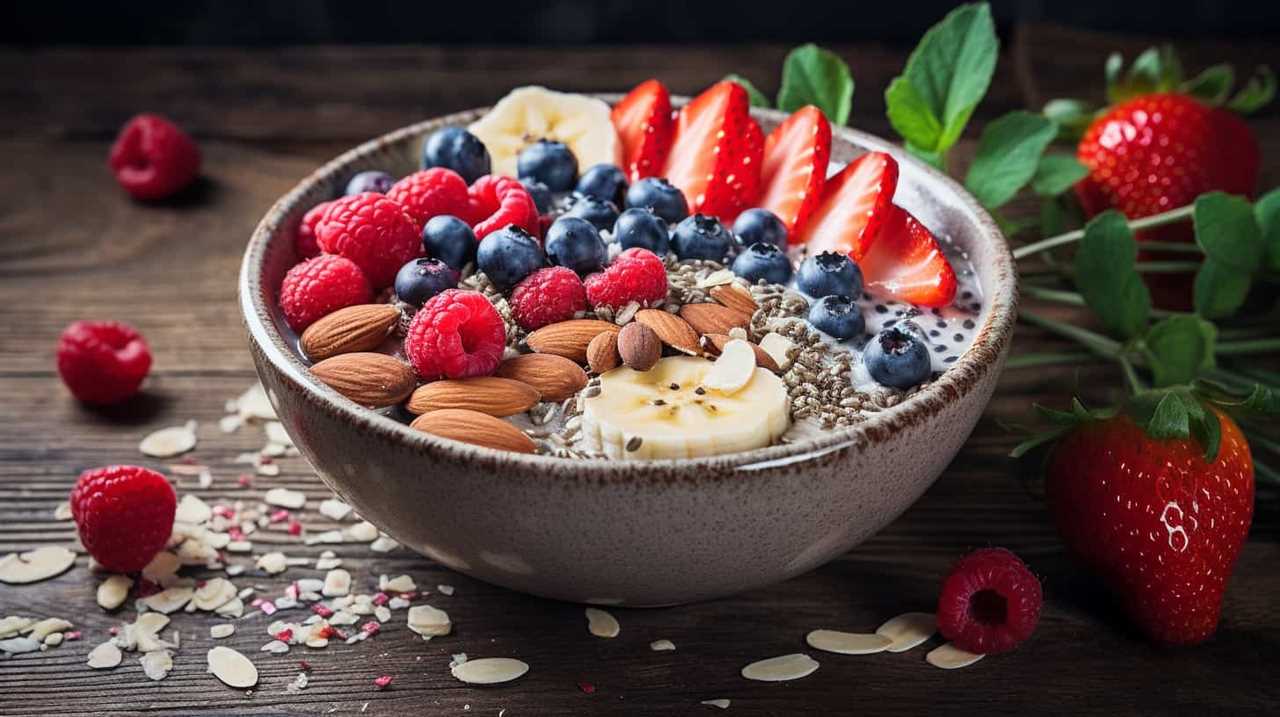
In baking, chia seeds can act as a binder, helping to provide structure and moisture to gluten-free breads.
Chia Seeds’ Nutritional Benefits
We have discovered that incorporating chia seeds into gluten-free baking recipes enhances the nutritional value and boosts the overall health benefits. Chia seeds offer numerous benefits, making them an excellent addition to any gluten-free diet.
Firstly, chia seeds’ role in weight loss is well-documented. They’re high in fiber, which helps to promote feelings of fullness and reduce appetite. Additionally, chia seeds can absorb large amounts of water, forming a gel-like substance in the stomach that slows down digestion and helps to stabilize blood sugar levels.
Furthermore, chia seeds can serve as a great egg substitute in gluten-free baking. When mixed with water, chia seeds form a gel that can be used as a binding agent, similar to eggs. This makes chia seeds a versatile and nutritious alternative for those with egg allergies or following a vegan diet.

Chia Seeds in Baking
Incorporating chia seeds into gluten-free baking recipes enhances the nutritional value and boosts the overall health benefits, especially when it comes to creating delicious alternatives for those following a gluten-free diet. Chia seeds are a versatile ingredient that can be used in various ways in baking. They can be added to smoothies and desserts to provide an extra dose of nutrition.
Chia seeds are a rich source of omega-3 fatty acids, fiber, and antioxidants. These tiny seeds are also packed with protein, making them a great addition to gluten-free baked goods. When soaked in liquid, chia seeds develop a gel-like consistency, which can help bind ingredients together in recipes. This makes chia seeds a valuable ingredient in gluten-free baking, where finding suitable binders can be a challenge.
Chia Seeds as Binders
When using chia seeds as binders in gluten-free baking, these nutritious seeds offer a valuable solution for improving texture and ensuring the ingredients are well combined. Chia seeds are a great alternative to traditional binders like flax seeds, providing similar benefits with their unique properties. Chia seeds are packed with fiber, omega-3 fatty acids, and antioxidants, making them a nutritious addition to any recipe. They have the ability to absorb liquid and form a gel-like consistency, which helps to bind the ingredients together and create a soft and moist texture in gluten-free bread. Compared to flax seeds, chia seeds have a milder flavor, making them a versatile option for various recipes. In the table below, we compare chia seeds and flax seeds as binders for gluten-free bread:
| Chia Seeds | Flax Seeds |
|---|---|
| Nutritious | Nutritious |
| Mild flavor | Strong flavor |
| Gel-like consistency | Gel-like consistency |
| Rich in omega-3 fatty acids | Rich in omega-3 fatty acids |
Using chia seeds as binders in gluten-free bread is a simple and effective way to achieve the desired texture and taste. In the next section, we will provide a step-by-step guide to using chia seeds in gluten-free bread, ensuring you can enjoy delicious and nutritious bread without gluten.
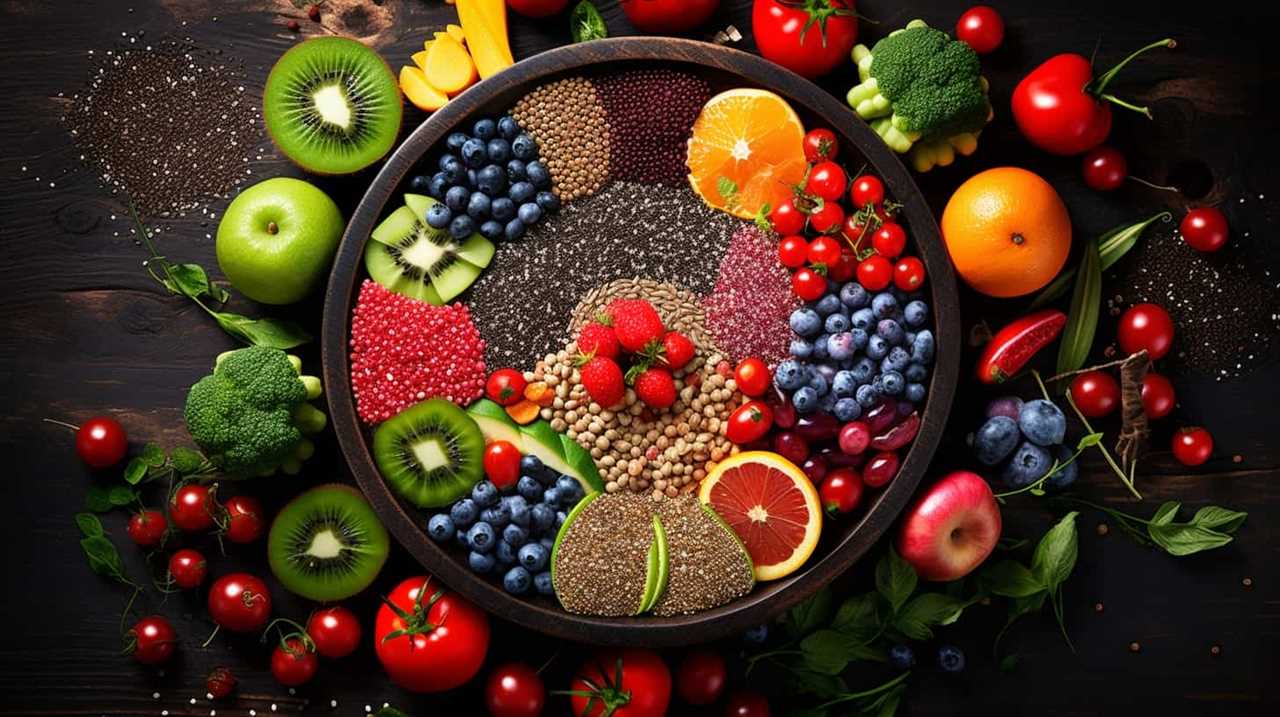
Step-by-Step Guide to Using Chia Seeds in Gluten-Free Bread
To begin incorporating chia seeds into our gluten-free bread, first, measure out the desired amount of seeds. Chia seeds can be used whole or ground, depending on your preference.
Here is a step-by-step guide to using chia seeds in your gluten-free bread:
- Make chia gel: Mix 1 part chia seeds with 6 parts water and let it sit for 10-15 minutes until it forms a gel-like consistency. This gel acts as a binder in gluten-free bread recipes.
- Add chia gel to the dough: Once the chia gel is ready, incorporate it into your gluten-free bread dough. It helps to improve the texture and structure of the bread, making it less crumbly.
- Troubleshoot common issues: If your bread turns out too dense or dry, try decreasing the amount of chia gel next time. On the other hand, if the bread is too moist, you can reduce the amount of liquid in the recipe or increase the baking time.
Tips and Tricks for Making Perfect Chia Seed Gluten-Free Bread
We found that using chia seeds in our gluten-free bread recipe has greatly improved its texture and structure. Chia seeds are a fantastic alternative ingredient for gluten-free bread, providing a nutritious boost and helping to bind the ingredients together.
Here are some tips and tricks we’ve discovered to help you achieve the perfect chia seed gluten-free bread.
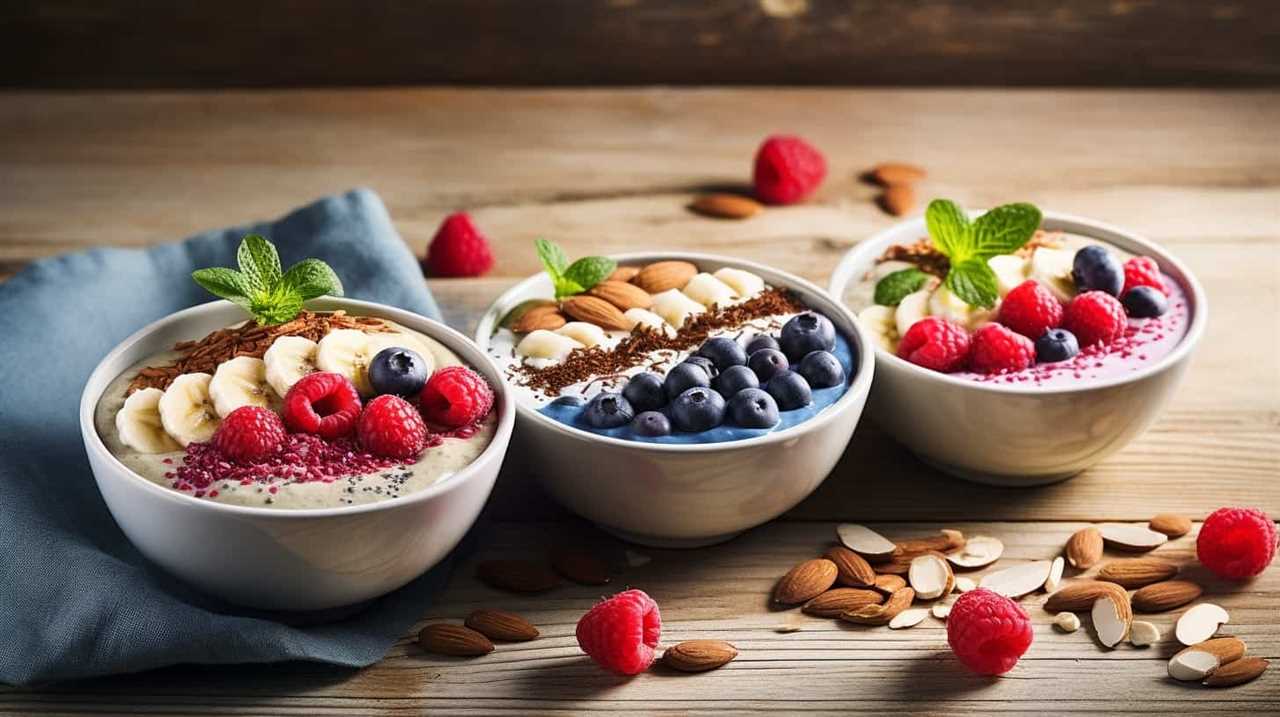
Firstly, make sure to soak the chia seeds in water for about 10-15 minutes before adding them to the dough. This allows them to absorb moisture and become gel-like, which helps with the bread’s texture.
Secondly, you can experiment with different gluten-free flours like almond flour, buckwheat flour, or quinoa flour to enhance the flavor and consistency of your bread.
Lastly, don’t be afraid to add other ingredients like nuts, seeds, or dried fruits to add extra flavor and texture.
By following these tips, you’ll be able to create delicious chia seed bread recipes that are gluten-free and packed with nutrients.
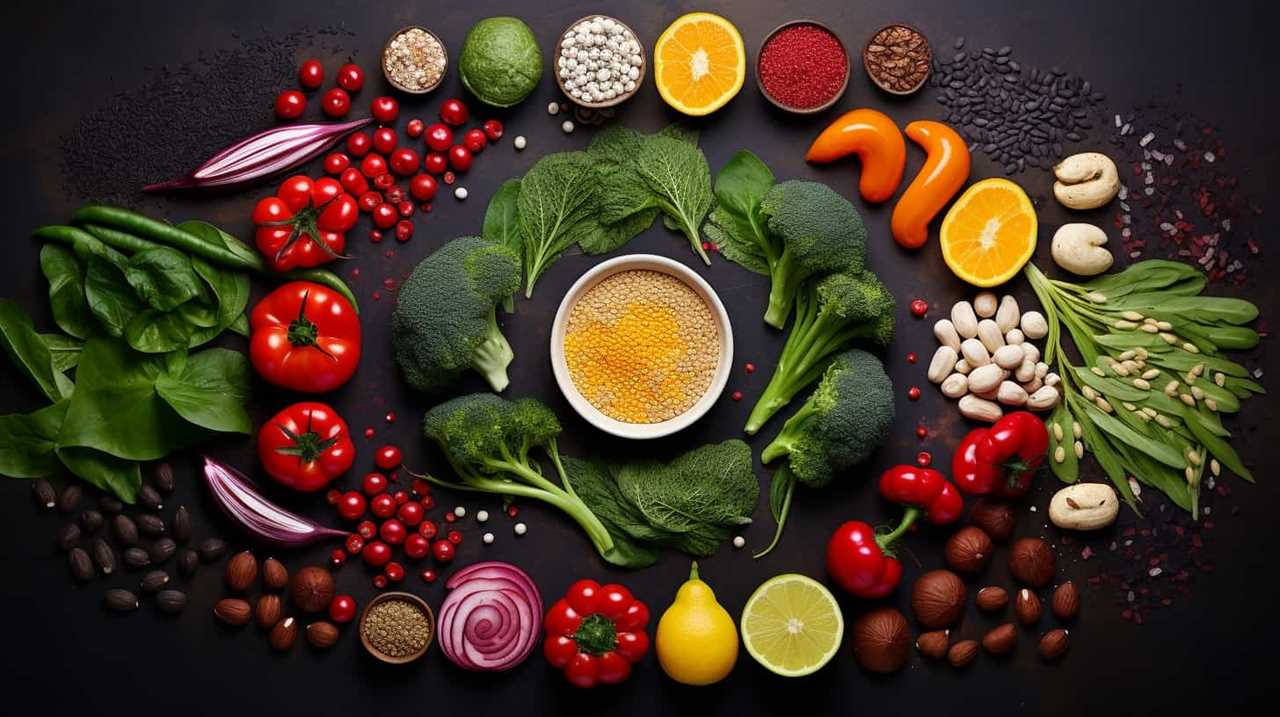
Now that we’ve shared some tips and tricks for making perfect chia seed gluten-free bread, let’s move on to exploring some delicious recipes for gluten-free bread with chia seeds.
Delicious Recipes for Gluten-Free Bread With Chia Seeds
Continuing our exploration of delicious recipes for gluten-free bread with chia seeds, let’s delve into some mouthwatering options that incorporate this nutritious ingredient.
Chia seeds aren’t only packed with omega-3 fatty acids and fiber, but they also provide a delightful crunch to your bread. Here are three irresistible recipes to try:
- Chia Seed Banana Bread: This moist and flavorful bread combines the sweetness of ripe bananas with the nuttiness of chia seeds. It’s a perfect breakfast or snack option, providing a boost of energy and essential nutrients.
- Chia Seed Multigrain Bread: This hearty bread combines chia seeds with other gluten-free grains like quinoa, amaranth, and buckwheat. The result is a nutritious, fiber-rich loaf that’s perfect for sandwiches or toast.
- Chia Seed Cinnamon Raisin Bread: This aromatic bread is infused with the warm flavors of cinnamon and studded with plump raisins. The addition of chia seeds adds texture and a nutritional boost to this classic favorite.
When using chia seeds in your gluten-free bread recipes, you can substitute them for other binders like xanthan gum or flaxseed meal. Chia seeds not only add nutritional value but also enhance the overall taste and texture of your bread.

Frequently Asked Questions
Can Chia Seeds Be Substituted With Other Ingredients in Gluten-Free Bread Recipes?
Yes, chia seeds can be substituted with other ingredients in gluten-free bread recipes. However, it’s important to note that chia seeds offer unique benefits like binding and moisture retention, so finding suitable substitutes may require experimentation.
How Do Chia Seeds Affect the Texture and Taste of Gluten-Free Bread?
Chia seeds, like tiny glue, bind gluten-free bread together and add a fibrous texture. Their neutral taste blends seamlessly, making them a versatile and healthy addition to supergrain-based recipes.
Are There Any Specific Measurements or Ratios to Follow When Using Chia Seeds in Gluten-Free Bread?
When using chia seeds in gluten-free bread, it’s important to follow specific measurements or ratios. This helps ensure the texture and taste are balanced. Chia seeds also offer health benefits, like added fiber and Omega-3 fatty acids.
Can Chia Seeds Be Used in Other Gluten-Free Baked Goods, Such as Cookies or Muffins?
Yes, chia seeds can be used in other gluten-free baked goods like cookies or muffins. They provide numerous benefits, such as adding fiber and omega-3 fats. If you’re looking for alternatives, flaxseeds or psyllium husk can also work well.
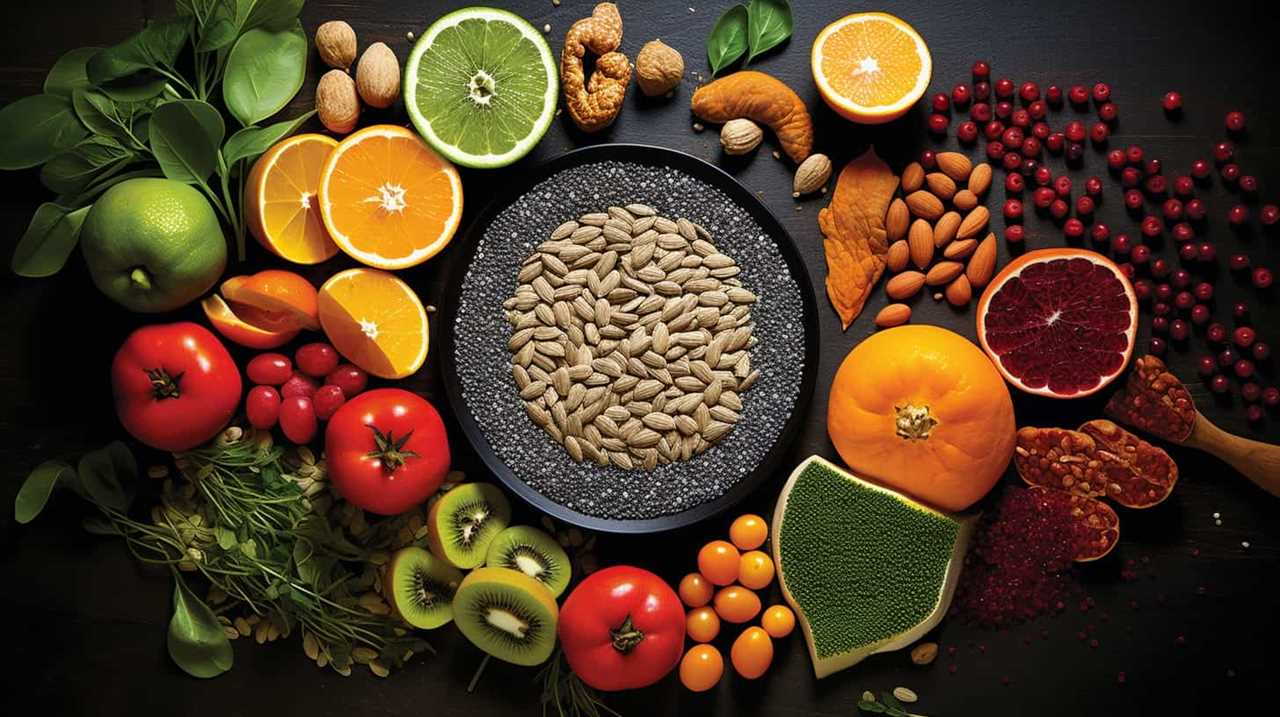
Are There Any Potential Allergies or Sensitivities to Consider When Using Chia Seeds in Gluten-Free Bread?
Potential reactions to consider when using chia seeds in gluten-free bread include allergies or sensitivities. If needed, alternative substitutes can be used. It is important to be aware of these possibilities for those with dietary restrictions.
Conclusion
In conclusion, chia seeds are a powerful supergrain that can elevate the taste and nutritional value of gluten-free bread.
With their abundant health benefits and versatility in baking, chia seeds provide a nutritious alternative for those following a gluten-free diet.
By following the step-by-step guide and implementing the tips and tricks provided, you can create delicious and satisfying gluten-free bread with the added goodness of chia seeds.

Start exploring the possibilities and enjoy the benefits of this supergrain in your baking today!
Hi, I’m Sarah. I write for Turtle Tree Seeds, a news blog that loves food – all kinds of food. But especially bacon, chocolate, and veggies. We’re on a mission to show the world that you can enjoy all of those things, even kale and brussels sprouts. Because we believe that when it comes to food, there’s no such thing as guilty pleasures. Just pleasures.
I’m also a huge fan of puns (obviously).
-
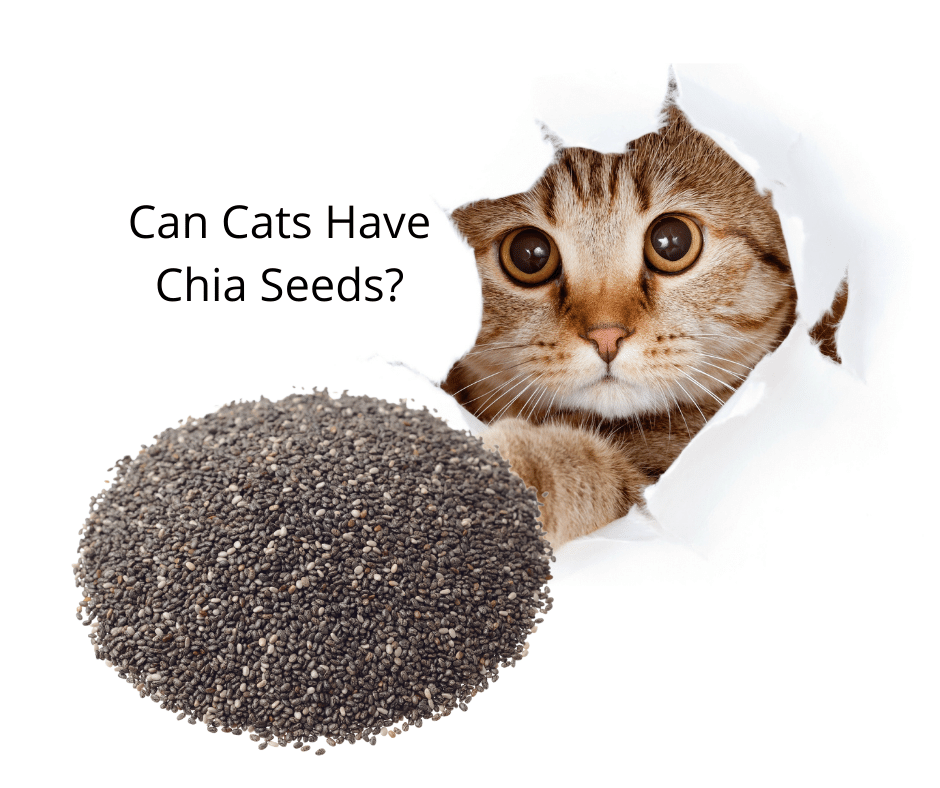
 Chia Seeds4 weeks ago
Chia Seeds4 weeks agoCan Cats Have Chia Seeds?
-
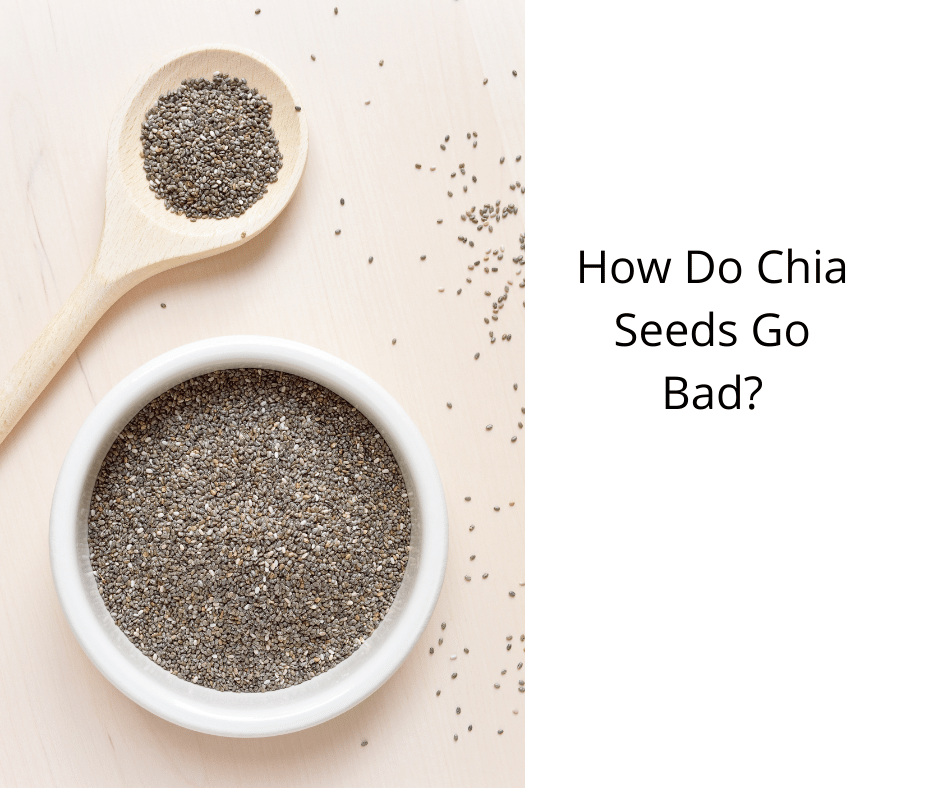
 Chia Seeds4 weeks ago
Chia Seeds4 weeks agoHow Do Chia Seeds Go Bad?
-

 Chia Seeds4 weeks ago
Chia Seeds4 weeks agoDo Chia Seeds Make You Poop?
-

 Health Risks and Allergies Related to Chia Seeds4 months ago
Health Risks and Allergies Related to Chia Seeds4 months agoWhy Do Chia Seeds Gel
-

 Chia Seeds4 weeks ago
Chia Seeds4 weeks agoHow to Use Chia Seeds For Weight Loss
-

 Chia Seeds and Digestive Health2 months ago
Chia Seeds and Digestive Health2 months agoWhy Are Chia Seeds Beneficial For Gut Health?
-
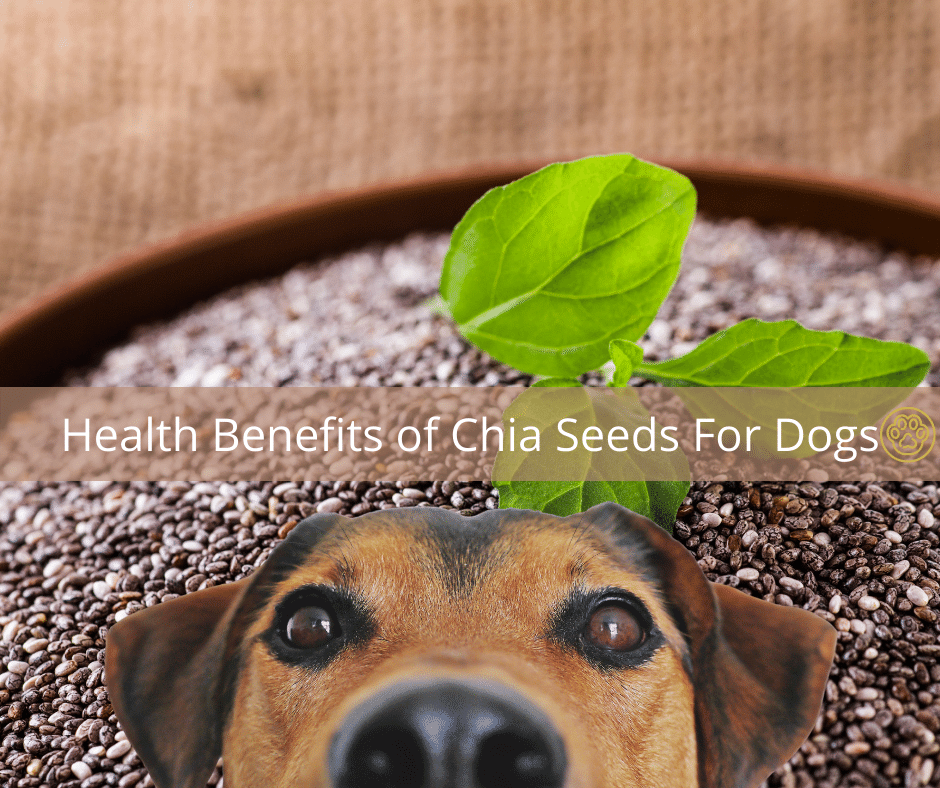
 Chia Seeds4 weeks ago
Chia Seeds4 weeks agoHealth Benefits of Chia Seeds For Dogs
-
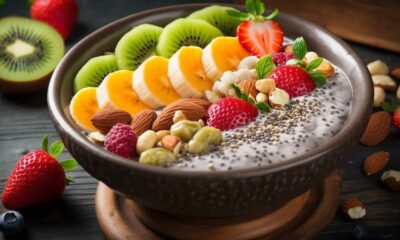
 Chia Seeds in Gluten-Free Diets3 months ago
Chia Seeds in Gluten-Free Diets3 months agoYour Dependable Guide: Chia as a Gluten Substitute




